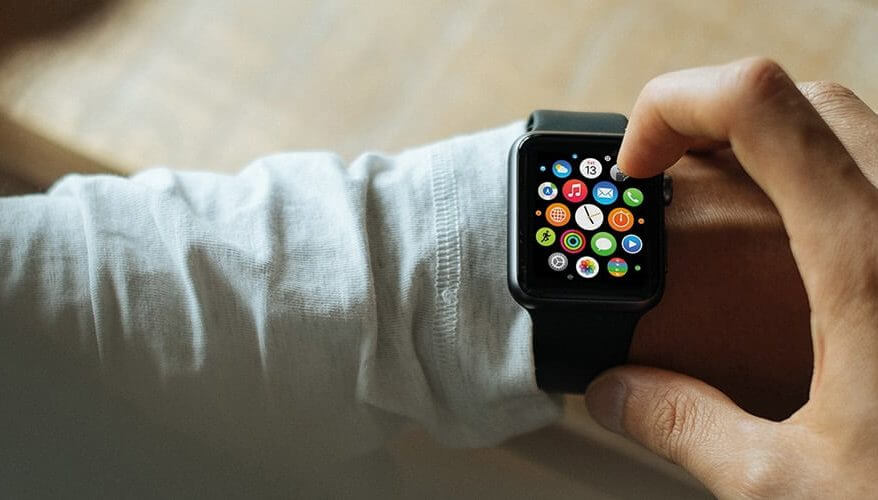Content Attributes
In an era where technology is intertwined with every aspect of our lives, wearable tech has emerged as a pivotal player. From fitness trackers and smartwatches to VR headsets, these gadgets are more than just accessories; they are extensions of our personal and professional lives. And the latest invention in wearable technology are smart rings like Oura and Evie that are also worn as stylish accessories. This article delves into how wearable technology is reshaping our daily routines, and enhancing our health, entertainment, and connectivity.
Revolutionizing Health and Fitness Monitoring
Wearable technology has dramatically transformed how we monitor our health and fitness. Devices like fitness trackers and smartwatches are equipped with sensors that track heart rate, sleep patterns, and physical activity.

This constant monitoring provides invaluable insights into our health, encouraging a more proactive approach. Users can set and achieve fitness goals, monitor their progress, and even receive reminders to stay active, fundamentally altering the landscape of personal health.
Enhancing Workplace Productivity
In the workplace, wearable tech such as smart glasses and advanced smartwatches are redefining efficiency and productivity. These devices offer hands-free access to important information, allowing users to access data, view instructions, or communicate with colleagues without interrupting their tasks.
For industries that require constant mobility or hands-on work, such as healthcare, manufacturing, or logistics, this means improved workflow and enhanced safety. Additionally, wearable tech aids in better time management and fosters a more connected and integrated work environment.
Improving Personal Safety and Security
The safety and security applications of wearable tech are profound. Devices with built-in GPS, emergency response features, and health monitoring systems provide a safety net for individuals in potentially hazardous situations.
For the elderly or those with specific health conditions, wearables can be life-saving, notifying caregivers or emergency services during a health crisis. This aspect of wearable tech not only offers practical safety benefits but also provides psychological comfort to users and their families.
Transforming Communication and Connectivity
Wearable tech has streamlined communication, making it more accessible and less intrusive. With smartwatches, for instance, users can receive notifications, respond to messages, or even take calls without needing to use their smartphones.
This convenience enhances our ability to stay connected with others while minimizing the disruption to our current activities. For people who are constantly on the move or those who need to stay connected for professional reasons, this aspect of wearable technology is particularly beneficial.
Influencing Fashion and Personal Style
The intersection of technology and fashion in wearables is creating a new avenue for personal expression. Wearable devices are not just functional; they are fashionable accessories that make a statement. The market now offers a wide range of styles, from sporty to elegant, catering to diverse fashion tastes.
Luxury brands are also entering the wearable tech space, merging high fashion with high tech. This trend indicates a shift in how we perceive technology – not just as a tool but as an integral part of our identity and style.
Revolutionizing Entertainment and Gaming
The impact of wearable tech on entertainment, particularly through VR headsets, is transformative. Offering an immersive experience, VR has changed how we consume content, be it gaming, movies, or interactive learning. It provides a level of engagement that traditional screens cannot match, creating a sense of presence within a virtual environment.
This has implications for entertainment and education, training, and even therapeutic applications, offering new ways to engage with content and experiences. Wearable technology is not just changing the game; it’s creating new forms of interactive experiences. VR and AR headsets offer gaming, educational experiences, virtual travel, and immersive storytelling.
These headsets can transport users to historical events, distant planets, or fictional worlds, offering an unparalleled educational tool. The potential of VR and AR in training and skill development is also being explored, providing a safe and interactive environment for learning complex tasks.
Smartwatches for Children: Connectivity and Entertainment
A noteworthy mention is the rising popularity of children’s smartwatches. These devices allow parents to stay connected with their kids, offering location tracking and calling features. Moreover, they provide age-appropriate entertainment for kids, such as games and educational apps, blending safety with fun.
Beyond games and entertainment, these devices can include features like language learning apps, math puzzles, and interactive storytelling, contributing to a child’s cognitive development. They also offer a way for children to learn about digital responsibility and time management, preparing them for a technology-driven future.
The balance between entertainment, education, and safety in these devices showcases how technology can be adapted to suit the needs of younger users, promoting a healthy relationship with digital devices.
The scope of wearable technology in our daily lives is vast and continually evolving. As these devices become more sophisticated and integrated into our lifestyle, their influence extends beyond mere convenience, becoming catalysts for better health, enhanced productivity, and a more connected life.
The future of wearable tech holds exciting possibilities, poised to further enrich and simplify our daily experiences in ways we are just beginning to imagine.